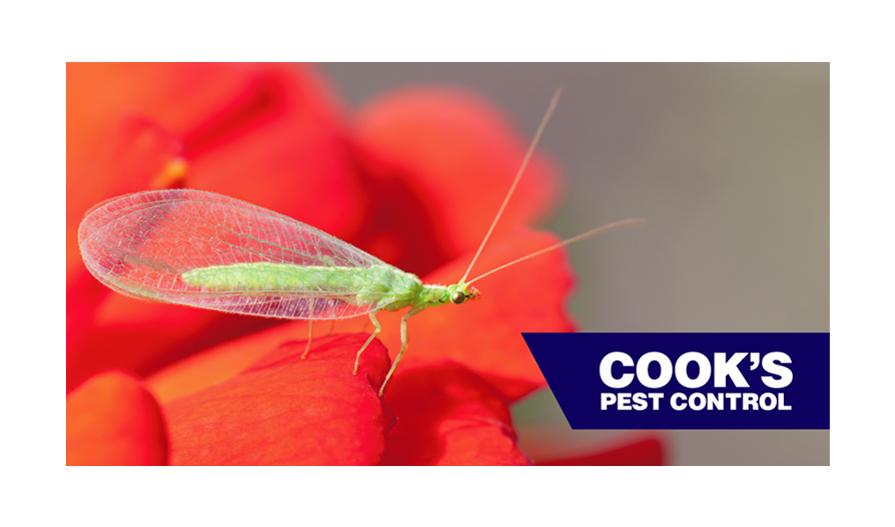Pests That Eat Other Pests

Since we work in pest control, it’s easy to enter the frame of mind that all pests are bad or the world would be better off without certain pest species in it. It’s important to remember what pests are though. The term ‘pest’ is just an artificial name we give to insects that are disrupting or intruding on our lives. Any species of plant, animal, or fungus can be a pest as soon as it enters a space where we don’t want them, such as our homes, businesses, agriculture, etc. However, it’s important to remember that these pests have important roles in nature, either as important food sources for larger animals or as predators of other pest species. Examples of this include lacewings, antlions, and ladybugs.
The Pests That Show No Mercy
For lacewings, the most beneficial stage of life to us is the larval stage. Adult lacewings will lay their eggs atop thin silk-like stalks about ½ an inch long. The eggs are placed here to protect them from other predators, such as ants, as well as cannibalism by sibling larvae. Lacewing larvae are voracious predators of garden pests. They crawl along plants looking to eat any soft-bodied insects. These are most often aphids but the larva will also eat caterpillars and small beetle species. Lacewing larva are very effective at controlling garden pests and very beneficial to plant/garden health. This larva also exhibit one of the most macabre forms of camouflage. Once they eat their prey, the larvae will place it’s empty exoskeleton on its back, as well as other debris. This allows it to easily sneak past any ants guarding the aphids, exactly like the old ‘wolf in sheep’s clothing’ fable.
Antlions are, as their name suggests, predators of ants. Although the adults are the more visible and active form of the antlion, they are predators in their larval stage. An antlion larva almost looks like a small bed bug but with one large difference. Antlion larva have two large, imposing-looking mandibles they use to trap and eat ants. Although you’ll probably never see an antlion larva just walking around, they are easy to find. They make small craters in sandy soil, where they sit at the bottom and wait for an ant or other small insects to fall in. Once it does, the antlion kicks dirt at it to prevent it from climbing out. Once the prey gets close enough to the center of the crater, the antlion strikes with its mandibles. Due to their method of hunting, antlions are the inspiration for the Sarlaac, the desert sand-pit monster in Star Wars: Return of the Jedi.
Unlike the previous two insects, Lady Bugs are voracious predators of aphids and other soft insects as both larva and adult. Although this can lead to competition between the two life stages, adults and larva may feed on different areas of the plant or at different times of the day. Ladybug larva are soft, alligator-like insects that crawl around the plant looking for food. A single ladybug larva can eat ten to twenty aphids a day. Just a handful of ladybug larva on a plant can dramatically reduce the aphid population, resulting in healthier plants and gardens.
